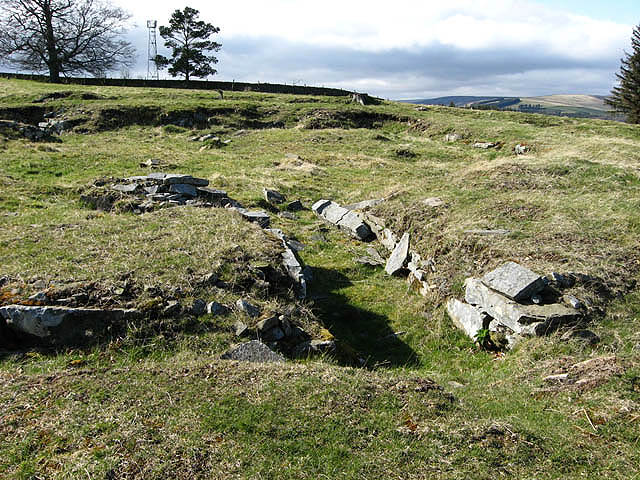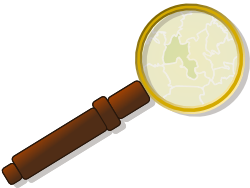Search the Gazetteer
Are the results not as expected? Modify your search term or change the scope to refine your search.
Results for a place that exactly matches ...
Selkirkshire
Selkirkshire, Scotland
Selkirkshire is an inland county in the Southern Uplands. This is gentle hill country, a green landscape, well wooded and well grazed on the open slopes and valleys. The west of Selkirkshire is the high ground of the Tweedsmuir Hills, and here rise the county's two main rivers, the Ettrick and the Yarrow. Both have been celebrated in traditional songs. Wordsworth penned three poems inspired by the Yarrow. They run parallel eastwards to the lower dales, the Yarrow entering the Ettrick at Meetings Pool. Nearby Bowhill House is an 18th-century grant country house. In its grounds is Newark Castle, a ruined 15th-century tower house. Selkirk is one of the oldest Royal Burghs in Scotland. The town is known for bannocks, a dry fruit cake. The Tweed crosses the north-east of the county, meeting the Ettrick below Selkirk. Galashiels lies on the Gala Water, near its confluence with the Tweed.
Portrait of Selkirkshire
Place Type: Historic County
Lat, Long: 55.537286,-2.99777
Grid Reference: NT371275
Country: Scotland
GBPNID: 305808
Entry Type: Main listing (P)
URL: https://gazetteer.org.uk/place/Selkirkshire
 Explore Selkirkshire on Wikishire
Explore Selkirkshire on Wikishire
The Ettrick flows across almost the entire county. It rises in the far south-west on the slopes of Wind Fell, at the border with Dumfriesshire, and flows north-eastwards down to the village of Ettrick and down Ettrickdale, where the floodplain by the village is known as the Ettrick Marshes.

Ettrick Marshes
Below Ettrickbridge the river flows on beside small villages to the county town, Selkirk, below which its wild nature appears to tame itself a little. A little north of Selkirk, the Ettrick casts its waters into the River Tweed at the Roxburghshire border.
The source of the Yarrow Water is St Mary's Loch on the border with Peeblesshire and from there the river flows 12 miles in an easterly direction through Selkirkshire (with a fall of fully 405 feet passing such villages as Yarrow Feus, Yarrow and Yarrowford) before joining the Ettrick near to the site of the 1645 Battle of Philiphaugh just west of Selkirk. This joining of the waters is known as the Meetings Pool. The valley of the Yarrow has inspired several well-known songs and poems. Its traditions and folk tales were well documented by Walter Scott, who spent part of his childhood nearby.

Yarrowford from Foulshiels Hill
The Tweed crosses through the north-west of Selkirkshire. The land between the Ettrick and the Tweed was formerly covered with forest to such an extent that the shire gained an alternative name, Ettrick Forest, a royal hunting forest populated by the oak, birch and hazel and by red deer. King James V, however, would forego the sport to let the land for grazing, and thus vast stretches of woodland became pasture for sheep, leaving today little of the once mighty woodland.
There are no great lochs in Selkirkshire but St Mary's Loch and adjoining it the Loch of the Lowes are remarkably prettily set.

St Mary's Loch
The Royal Burgh of Selkirk, on the Ettrick Water, is one of the oldest Royal Burghs in Scotland. Selkirk's population grew up because of its woollen industry. The town is known for bannocks, a dry fruit cake.
Bowhill House, built in 1708, is a grant country house near Bowhill, close to Selkirk. It is home to part of one of the world's greatest private art collections. Newark Castle, a large, ruined 15th century tower house, stands in the grounds of Bowhill House, in the valley of the Yarrow Water.

Bowhill House
Galashiels lies on the Gala water which forms the border with Roxburghshire at this point. It is a major commercial centre for the region with a history in the textile industry. Nearby Torwoodlee Broch is the remains of an iron-age broch, one of very few brochs to be found outside the northern Highlands. The broch stands on the site of an earlier hillfort on the shoulder of a ridge.

Torwoodlee Broch
Following the Roman withdrawal, the area became part of the kingdom of Strathclyde and then the Anglo-Saxon kingdom of Northumbria. About 1020, it was annexed to Scotland. The first known sheriff was Andrew de Synton, appointed by William the Lion (who died in 1214). The county subsequently suffered centuries of border warfare. Selkirkshire was one of the unquiet border shires, wracked by the violence of the reivers from the 13th to the 17th centuries. The Industrial Revolution largely left Selkirkshire untouched, although woollen textile manufacture did develop in Galashiels and Selkirk town.
Portrait of Selkirkshire
Place Type: Historic County
Lat, Long: 55.537286,-2.99777
Grid Reference: NT371275
Country: Scotland
GBPNID: 305808
Entry Type: Main listing (P)
URL: https://gazetteer.org.uk/place/Selkirkshire
 Explore Selkirkshire on Wikishire
Explore Selkirkshire on WikishireThe Ettrick flows across almost the entire county. It rises in the far south-west on the slopes of Wind Fell, at the border with Dumfriesshire, and flows north-eastwards down to the village of Ettrick and down Ettrickdale, where the floodplain by the village is known as the Ettrick Marshes.

Ettrick Marshes
Below Ettrickbridge the river flows on beside small villages to the county town, Selkirk, below which its wild nature appears to tame itself a little. A little north of Selkirk, the Ettrick casts its waters into the River Tweed at the Roxburghshire border.
The source of the Yarrow Water is St Mary's Loch on the border with Peeblesshire and from there the river flows 12 miles in an easterly direction through Selkirkshire (with a fall of fully 405 feet passing such villages as Yarrow Feus, Yarrow and Yarrowford) before joining the Ettrick near to the site of the 1645 Battle of Philiphaugh just west of Selkirk. This joining of the waters is known as the Meetings Pool. The valley of the Yarrow has inspired several well-known songs and poems. Its traditions and folk tales were well documented by Walter Scott, who spent part of his childhood nearby.

Yarrowford from Foulshiels Hill
The Tweed crosses through the north-west of Selkirkshire. The land between the Ettrick and the Tweed was formerly covered with forest to such an extent that the shire gained an alternative name, Ettrick Forest, a royal hunting forest populated by the oak, birch and hazel and by red deer. King James V, however, would forego the sport to let the land for grazing, and thus vast stretches of woodland became pasture for sheep, leaving today little of the once mighty woodland.
There are no great lochs in Selkirkshire but St Mary's Loch and adjoining it the Loch of the Lowes are remarkably prettily set.

St Mary's Loch
The Royal Burgh of Selkirk, on the Ettrick Water, is one of the oldest Royal Burghs in Scotland. Selkirk's population grew up because of its woollen industry. The town is known for bannocks, a dry fruit cake.
Bowhill House, built in 1708, is a grant country house near Bowhill, close to Selkirk. It is home to part of one of the world's greatest private art collections. Newark Castle, a large, ruined 15th century tower house, stands in the grounds of Bowhill House, in the valley of the Yarrow Water.

Bowhill House
Galashiels lies on the Gala water which forms the border with Roxburghshire at this point. It is a major commercial centre for the region with a history in the textile industry. Nearby Torwoodlee Broch is the remains of an iron-age broch, one of very few brochs to be found outside the northern Highlands. The broch stands on the site of an earlier hillfort on the shoulder of a ridge.

Torwoodlee Broch
Following the Roman withdrawal, the area became part of the kingdom of Strathclyde and then the Anglo-Saxon kingdom of Northumbria. About 1020, it was annexed to Scotland. The first known sheriff was Andrew de Synton, appointed by William the Lion (who died in 1214). The county subsequently suffered centuries of border warfare. Selkirkshire was one of the unquiet border shires, wracked by the violence of the reivers from the 13th to the 17th centuries. The Industrial Revolution largely left Selkirkshire untouched, although woollen textile manufacture did develop in Galashiels and Selkirk town.


 Menu
Menu